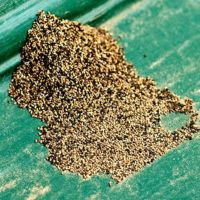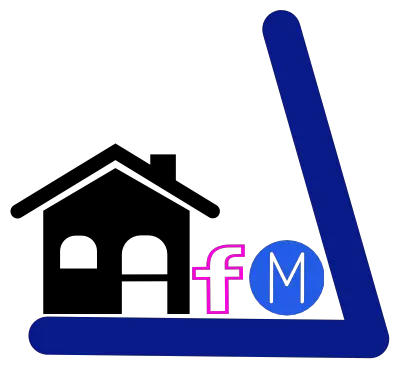Termite Droppings But NO Termites
Termite Droppings But NO Termites? Termite droppings, often referred to as “frass,” are a peculiar and sometimes puzzling phenomenon that can cause considerable concern among homeowners and property owners. What makes this topic particularly intriguing is that termite droppings can be found without the presence of actual termites.
These small, pellet-like waste materials are typically composed of digested wood and other organic matter, and their discovery can be a telltale sign of a hidden termite infestation or an entirely unrelated issue. We will delve into the world of termite droppings, exploring the reasons for their presence in the absence of termites and understanding how to distinguish them from other potential culprits.
Related: How Do Drywood Termites Enter Home
Termite Droppings But NO Termites
The presence of termite droppings, even in the absence of termites, can be a concerning discovery for homeowners, highlighting the need for thorough inspection and identification.
Understanding the origins and characteristics of these droppings is crucial for effective pest management and property maintenance.
Reasons behind Termite Droppings

1. Feeding Behavior
Termites are notorious for their ability to digest cellulose-rich materials, primarily wood. They feed on wood and other organic matter to sustain their colonies.
As termites chew through the cellulose, they break it down into smaller particles that are easier to digest. The waste byproduct of this feeding process is expelled from the termite’s body in the form of droppings, known as frass.
2. Colony Maintenance
Termite colonies are highly organized and have a well-defined caste system. Worker termites, which make up the majority of the colony, are responsible for foraging, feeding, and maintaining the nest.
Their constant activities include tunneling, grooming, and cleaning to keep the nest environment hygienic. Termite droppings are produced as a result of this ongoing maintenance and cleaning within the colony.
3. Nourishing Young Termites
In addition to colony maintenance, termite droppings can serve a critical purpose in nourishing the young termites. When worker termites regurgitate or deposit their feces, it can provide a source of nutrition for the developing nymphs and reproductives within the colony.
This recycling of waste materials plays a role in the efficient utilization of available resources and contributes to the colony’s overall sustainability.
4. Sign of Termite Activity
The presence of termite droppings can also act as a sign of active termite infestations in or around structures. As termites feed on wooden structures, they create tunnels and galleries within the wood.
The droppings accumulate within these galleries and are subsequently pushed out or fall out of the tunnels. Therefore, when homeowners find termite droppings in or around their property, it is a clear indicator of termite activity and a potential infestation.
5. Identification and Diagnosis
Termite droppings, while unsightly, can be a valuable clue for homeowners. Detecting these droppings can prompt early intervention to prevent further structural damage.
It’s crucial to accurately identify termite droppings and distinguish them from other debris to address the termite issue effectively. Regular inspections and the timely removal of frass can help mitigate potential damage caused by termites.
Understanding the reasons behind termite droppings is essential for both pest management professionals and homeowners. It not only sheds light on the ecological role of these waste materials within the termite colony but also serves as a crucial tool for early detection and prevention of termite infestations in residential and commercial properties.
What does termite frass look like?

Termite frass, or droppings, often resembles tiny, elongated pellets or grains, typically no more than 1mm in length. The color can vary, but it is commonly brown, tan, or beige. The texture is granular and can feel gritty when touched.
Termite droppings may accumulate in small piles or scattered about and are often found near potential entry points, such as cracks in wood or around windows and doors. These pellets are distinctive in appearance, which can help in their identification.
Are Termite Droppings Dangerous?
Termite droppings themselves are not harmful to humans or pets. However, they can be indicative of a termite infestation, which can cause significant structural damage to buildings and homes. If left untreated, termites can compromise the integrity of wooden structures, leading to costly repairs.
Therefore, while termite droppings may not pose a direct danger, they serve as a warning sign that action is needed to address the underlying termite problem.
Does termite poop look like sand?
No, termite droppings do not resemble sand. While both may appear as granular substances, termite frass typically has a more elongated, pellet-like shape and is composed of tiny wood particles.
Sand, on the other hand, consists of mineral grains and lacks the distinctive form and organic composition of termite droppings. If you find a granular substance resembling sand in or around your home, it is unlikely to be termite frass.
Do termite droppings look like coffee grounds?
Termite droppings can sometimes be mistaken for coffee grounds due to their granular appearance. However, they can be distinguished by their uniform size and shape, whereas coffee grounds tend to vary in size and have a more irregular texture. Additionally, termite droppings are often lighter in color, typically brown or tan, while coffee grounds are darker in hue. Careful examination and comparison of the two can help in discerning between the two substances.
Final Thoughts
Termite droppings, or frass, are a fascinating aspect of termite biology, reflecting their feeding behavior, colony maintenance, and resource management. These tiny, pellet-like waste materials are not inherently dangerous but serve as a warning sign of potential termite infestations that can be perilous to wooden structures. Recognizing the distinctive appearance of termite droppings and understanding the reasons behind their presence is vital for homeowners and pest control professionals alike.
Early identification and intervention are key to mitigating the damage termites can cause, ensuring the long-term integrity of homes and buildings. By staying vigilant and taking appropriate measures when termite droppings are discovered, property owners can protect their investments and preserve the structural soundness of their structures.





